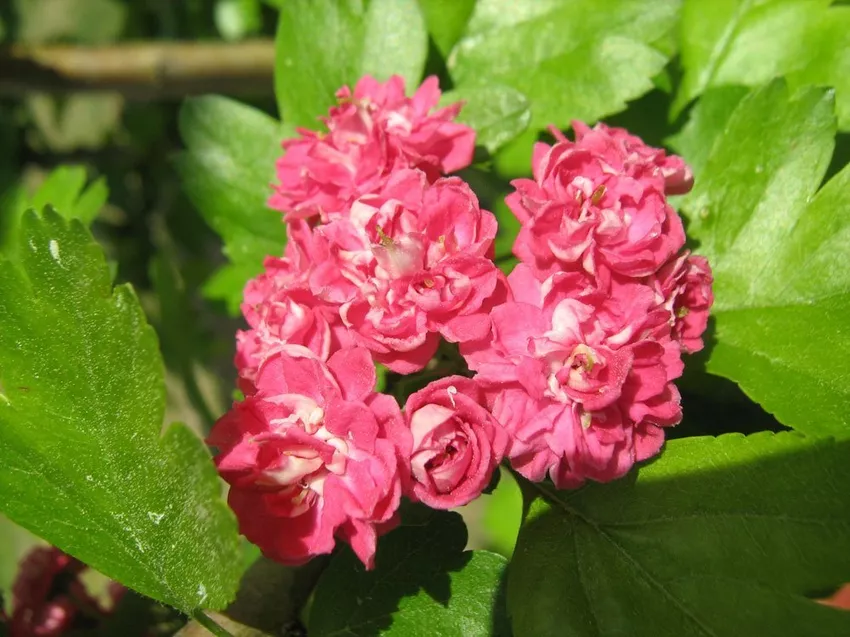Hawthorn is a fairly robust plant that is rarely attacked. However, there are some diseases and pests that can affect the plant.

As a robust plant that is well adapted to our climate, the hawthorn (Crataegus laevigata) is rarely affected by diseases and pests. However, it cannot be completely ruled out that the plant will begin to get sick. If you react quickly, the plants are usually not affected. We would like to describe the most common diseases and pests in more detail here. Find out how to recognize and correctly classify an infestation, as well as what really helps against diseases and pests.
An overview of the most common diseases and pests
- Fungus
- Firebrand
- Aphid
- Ghost Moth
Fungus
Fungus diseases on hawthorn are usually harmless and only affect the appearance but not the he alth of the plant. Fungal infestation is particularly common in warm and humid summers.
How can a fungal infestation be recognized?
The affected plants are characterized by the leaves turning black. The leaves dry up and eventually fall off.
What to do?
You don't need to take action when infested. Remove the old foliage and you will soon be able to see the hawthorn sprouting up again.
Firebrand
Fire blight is the most dangerous disease that can be observed on hawthorn. Initially, fire blight can be confused with a harmless fungal infestation, because here too the leaves turn brown to black. However, the leaves do not fall off. As a dangerous bacterial disease, fire blight affects not only hawthorn and hawthorn, but also fruit trees and various other ornamental trees. Coniferous trees or berries, on the other hand, are resistant to fire blight.
How do you identify fire blight?
As already mentioned, the leaves turn brown or black. But the leaves don't fall. The leaves look burnt. Hook-shaped deformations are also increasingly evident at the tips of the shoots. Typical for fire blight are also in summerand droplets of slime that appear on the plant in autumn and are caused by the bacteria.
The course of the disease depends on the age of the plant. While young plants die off after just a few weeks, older plants can live with the disease for several years.
What to do?
Fire blight infestation occurs particularly in warm, humid weather in spring and summer. Rapid action is then required, as the disease spreads like an epidemic and can easily be transmitted via garden tools, wind, insects or birds. In some areas there is even a reporting requirement for fire blight. Therefore, if you suspect that you have the disease, please contact the responsible authorities.
Important: Infested plant material must not be put on the compost and if possible also not in the organic waste bin. Incinerating or disposing of it with household waste is the better solution.
Plants are most commonly infected through the flower. If a regular check-up is carried out, the first signs of illness can be noticed at an early stage. You then have to cut back all affected shoots. Be sure to cut right into the he althy wood.
In the case of a severe infestation, there is usually no way to save the plant. Then you should remove the hawthorn immediately so that the disease does not spread further. All cutting tools used must then be thoroughly disinfected with high-proof alcohol.
Aphids
Aphids have our plants firmly under control, no wonder, because there are around 3,000 different species of voracious pests. When infested, the sap is sucked out of the leaves. This is difficult to see at first. But if you check your plants regularly, you will not miss the pests that are visible to the naked eye.
How to identify aphids?
If the leaves are sucked out, the leaves will become discolored and stains will form at the points of incision. A clear sign of aphid infestation are the so-called honeydew deposits. This sticky, sugary substance is the aphid's excrement. Honeydew, in turn, provides a breeding ground for fungi. It is not uncommon for plants infested with aphids to also be colonized by the sooty mold fungus.
What to do?
You can fight aphids quite well without chemical agents. It can already help if you shower the plant intensively with water. Also spraying with field horsetail stock (recipe for field horsetail stock),Nettle manure (recipe for nettle manure) or garlic stock (recipe for garlic stock) have proven effective. The aphids have natural predators in ladybirds, lacewings and parasitic wasps.
Ghost Moth
The caterpillars of the spider moth prefer hawthorn leaves. Their appetite seems to know no bounds, which is why they eat more and more. Especially in late spring you see more and more bare bushes and trees, which shimmer silvery and offer a bizarre picture.
How to recognize the spider moth?
Spider moths are light gray in color and have black dots. It is also characteristic of the pest that it has no hair. The caterpillars leave a fine veil to protect themselves from their natural predators.
What to do?
The webs can be cut out of the plants over a large area. It is also possible to collect the caterpillars. A vigorous shower can also help to drive away the caterpillars from the hawthorn. If balding occurs, there is no need to worry, because the hawthorn will sprout again around the St. John's shoot on June 26th.